If you are looking for the perfect addition to your garden, look no further than Tillandsia ionantha. If you have been to the local nurseries or houseplant stores, you would have come across this unique plant and wondered what the tiny plants do without rooting in the soil.
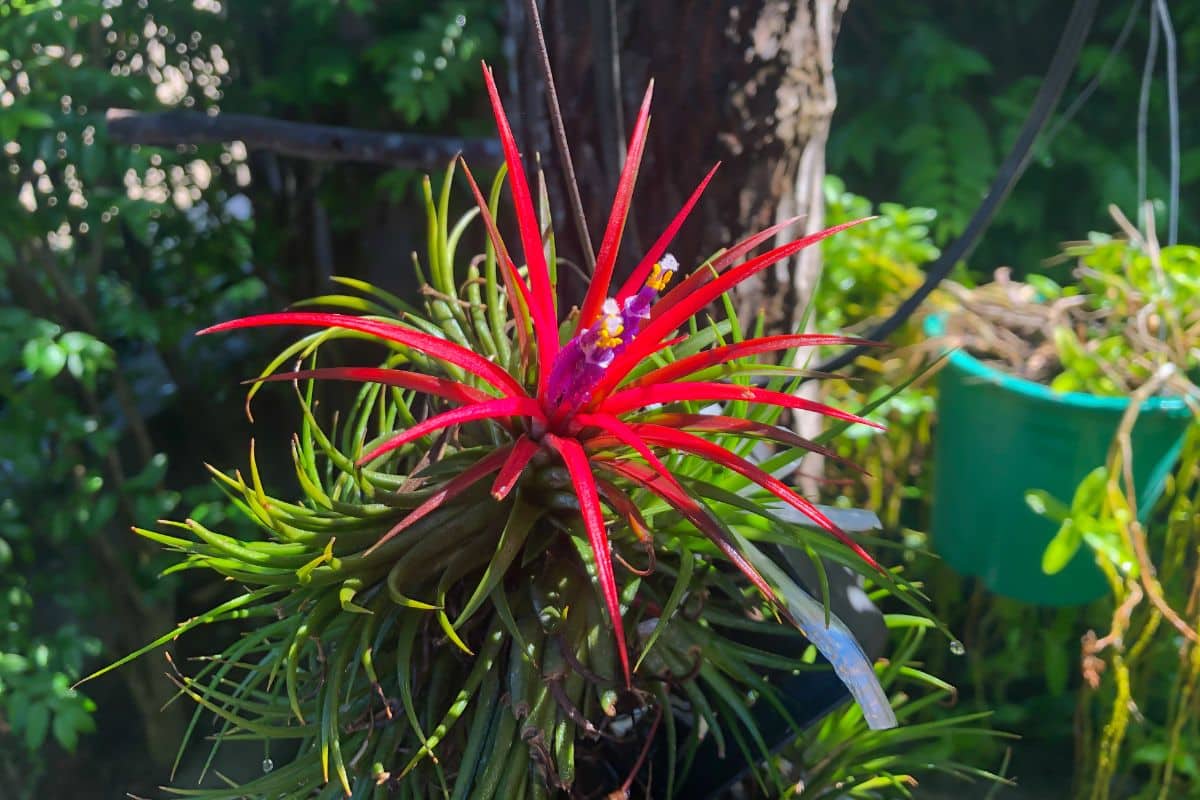
Tillandsia Ionantha is often seen as the perfect houseplant for beginner gardeners. However, don’t be deceived by their reputation, as they are a relatively tricky plant that can add height to any environment.
But it would be best if you gave it dappled sunlight, regular watering, moderate fertilizing, etc., so it can achieve its full potential.
Jump to:
- Facts About Tillandsia Ionantha
- Where to Buy Tillandsia Ionatha
- Tillandsia Ionantha Growing Guide
- Natural Habitat
- Light Needs
- Soil Needs
- Watering Needs
- Temperature/Humidity Needs
- Fertilizing Needs
- Potting & Repotting Tips
- Tillandsia ionantha Toxicity
- Common Tillandsia Ionantha Varieties
- Tillandsia Ionantha Propagation Tips
- Common Tillandsia Ionantha Pests & Diseases
- Frequently Asked Questions
Facts About Tillandsia Ionantha
| Common Names | Air Plant, Blushing Bride, Blushing Bride Air Plant, and Sky Plant |
| Scientific Name | Tillandsia Ionantha |
| Family | Bromeliaceae |
| Plant Type | Perennial, succulent |
| Mature Size | Up to 6 to 12 inches tall |
| Sun Exposure | Partial Sun |
| Bloom Time | Fall |
| Flower Color | Purple, red, pink |
| Hardiness Zones | 9 to 11 |
| Native Area | Central and South America |
| Toxicity | Non-toxic to humans, dogs or cats |
Also known as Air Plant amongst other names, Tillandsia Ionantha is an incredible plant that is easy to maintain. It features linear-lanceolate and green alongside deep pink or red plume-like bracts-colored leaves.
Its attractive looks make it more popular and the favorite amongst both beginners and experienced gardeners.
Among the 500 varieties of Tillandsia species, the air plant is among the most famous and gorgeous you’ll find. Ionantha begins small and possesses a group of green or gray leaves forming in a round shape.
This plant is very robust, adaptable, and requires little maintenance, and the ideal plant for beginner gardeners.
The more they get mature, the slender and elongated foliage stretches, the colors deepen, and they adopt a wavier form.
Tillandsia ionantha only flowers once, right before it withers. It can occur at any time throughout the year. It produces small, gorgeous yellow or white blooms appearing above the stunning purple-toned stems.
Where to Buy Tillandsia Ionatha
Tillandsia Ionantha Growing Guide
Natural Habitat
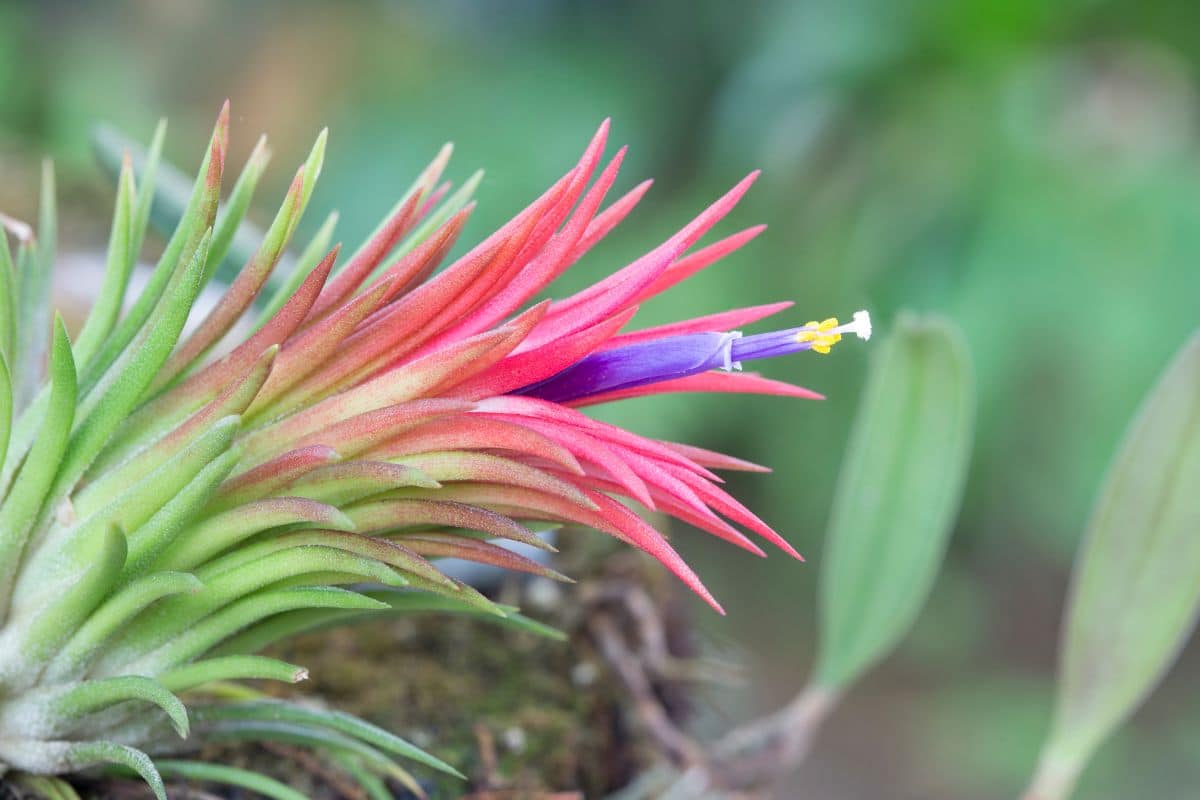
In its native habitat, which is the rainforest, tillandsia species can easily take in moisture and nutrients from the humid air. However, tillandsia ionantha is a very stubborn plant that cultivates build-up systems that enable it to survive in arid conditions.
Air plants are also used to less sunlight than most other tropical species because they mainly grow underneath a tree covered in filtered light. However, it produces very near as possible to the rainforest ceiling.
Light Needs
Lighting requirement is one of the trickiest factors in tillandsia growing. If you can get the lighting right for your tillandsia ionantha plant, you are halfway to success.
This plant thrives in dappled light; hence, if you put it in an area that receives robust and full sun during the day, it will become too dry and have scorch leaves, especially in low humidity.
This unique plant will be an excellent addition to office environments that has fluorescent lighting, as it enjoys the fluorescent more than anything. However, if it does not receive enough light, it will hardly produce any bloom.
Soil Needs
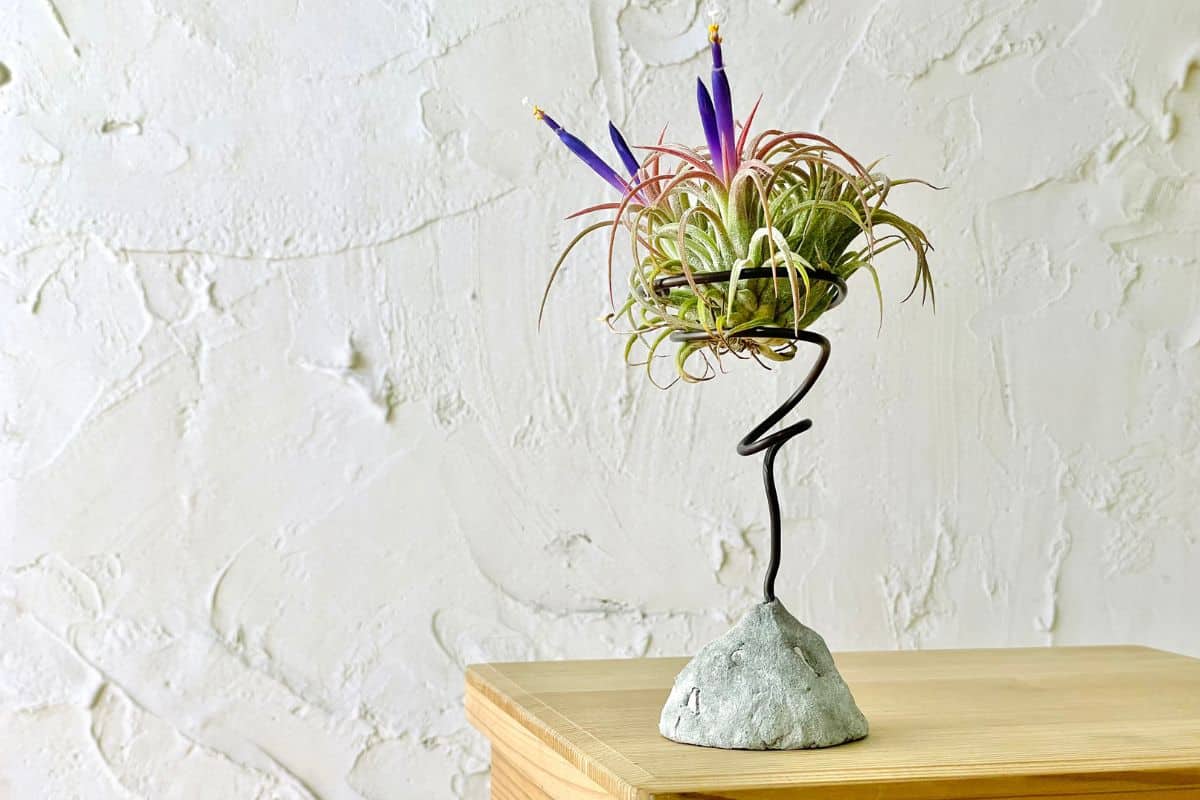
Remember the name, “Air Plant.” It is not a fluke! It means the tillandsia ionantha is an air plant that grows in the air, and its roots do not need any potting medium whatsoever.
In a hanging position, it needs to be secured with a plant-safe glue or wire. After about one month, it will start wrapping itself around the mount, wood, or other nearby plants.
Watering Needs
Like most other Tillandsia varieties, the air plant needs light misting every one or two days and then dip it in a water bowl every two weeks. After every dunking, you can shake off excess water and be sure that the plant is drying out between watering also.
Given that the air plant absorbs water via its succulent-like leaves, you must be mindful about the water you soak it in. It will be best to use filtered or distilled water since tap water may have compounds that’ll affect your plant.
If you insist on using tap water, then you must let it sit for a long time to enable chlorine and other additives to dissipate.
Temperature/Humidity Needs
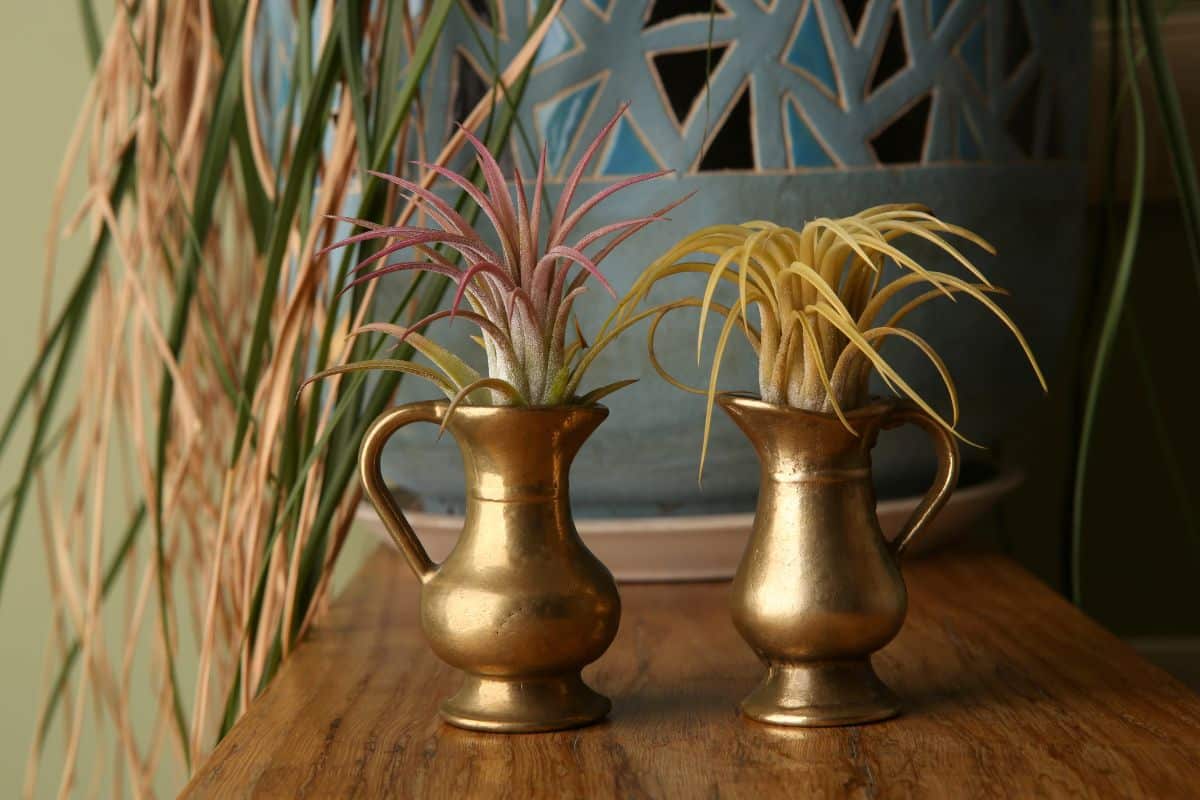
Tillandsia ionantha will thrive in average to warm temperatures of around 65 to 80 degrees Fahrenheit (18 to 27 degrees Celsius) during spring to early fall. At the same time, the cold rest of 60 degrees Fahrenheit (16 degrees Celsius) will enhance its flowering next summer.
Humidity-wise, the Tillandsia ionantha will need moderate to high humidity levels, precisely 50% humidity or above. If your air is dry, it can cause brown leaf tips. So, it will be helpful if you use a humidity tray, cool-mist room humidifier, or mist your air plant using tepid water.
Fertilizing Needs
Sunlight, water, and proper airflow are indeed necessary for the health of your tillandsia ionantha. However, in the long run, you’ll need to supplement these conditions with plant food, where fertilizing comes in.
For your air plant to thrive, you must feed it every other week in the spring or summer. In several cases, you might not need to provide your tillandsia in winter.
Choose foliar fertilizer, fish emulsion fertilizer, or bromeliad fertilizer, but don’t forget to dilute highly concentrated fertilizers.
Potting & Repotting Tips
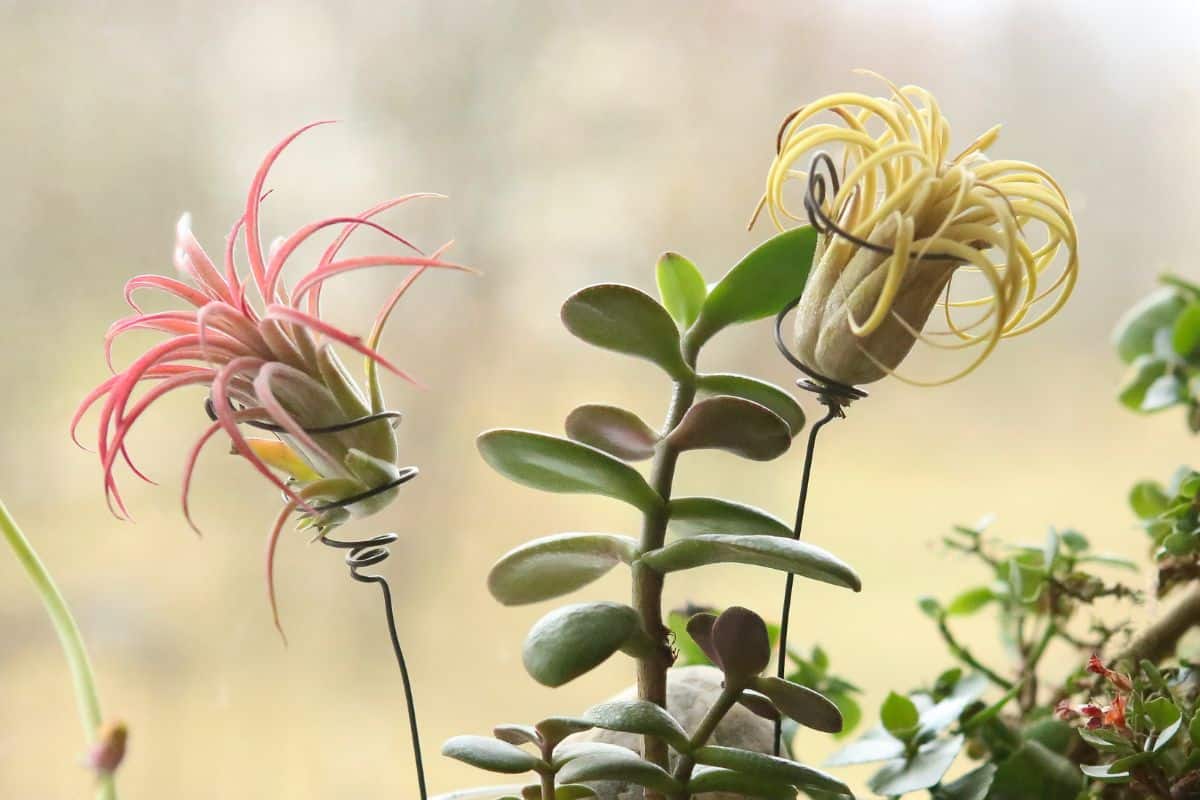
Tillandsia ionantha is an epiphytic plant; hence do not require potting. Air plants do not need repotting since it doesn’t grow in soil. The best growing medium is directly on windowsills or countertops.
In general, and for aesthetic reasons, you may opt for glass globes, shells, branches, cork bark, wood planks, or terrariums if you want to showcase their stunning appearance.
Tillandsia ionantha Toxicity
Tillandsia ionantha is not a poisonous plant; therefore, is not toxic to children or pets. If dogs or cats ingest it, it will not harm them. Air plant does not also contain any compound that is deemed poisonous or harmful to humans.
Common Tillandsia Ionantha Varieties
Air plant has several varieties, but the following is the most common species under the tillandsia lonantha variety.
- Feugo: This variety comes with deep red foliage whenever the plant receives sufficient sun.
- Rubra: This variety will thrive in a more spreading, broad form even though it is smaller than those mentioned above.
- Maxima: It is a larger-sized variety that can survive more direct sunlight.
Tillandsia Ionantha Propagation Tips
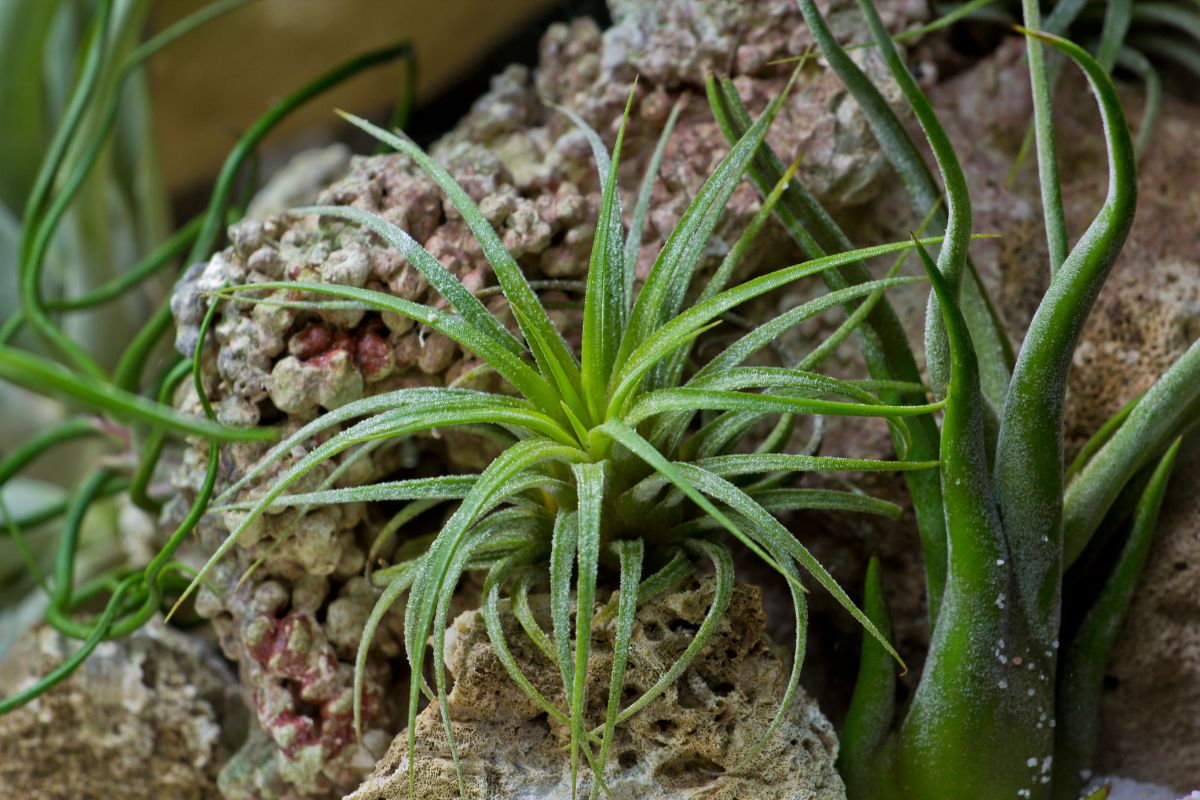
The best way to propagate a tillandsia ionantha is by using pups. Although you will need to be a bit patient with this method, it will surely produce incredible results.
You are always free to harvest the pups immediately after the first bloom cycle, as the reproduction process will start. Read down to see how you can propagate your air plant through pups;
- Cut a few pups joined to the base of the parent plant with a pair of sterilized scissors.
- Ensure you plant them in groups as your pups won’t like to grow alone.
- Avoid removing any pup until it is at least one-third the size of the parent plant.
- You can harvest the offsets developing on the edges of the parent plant if you choose to do so, significantly if it’s growing outdoors.
- Place the pups in bright indirect light and repeat the care guide above.
Common Tillandsia Ionantha Pests & Diseases
A few pests attack the general health of your tillandsia ionantha, and the most common of them are mealybugs and scale.
Use waxy cotton and isopropyl alcohol to remove any visible mealybugs on the leaves. If you leave them, they will destroy younger leaves by sucking the juicy sap tucking within.
Again, check out for scale insects underneath your air plant’s leaves, as that’s their hiding spot. The apparent symptom of scale insect attacks on your plant is shell-like bumps on the stalks, while the leaves will start turning yellow and gradually fall off the mother plant.
For diseases, check out for drooping of leaves, yellow leaves, root rot, etc. drooping of leaves is a sign of stress caused by improper watering, inadequate lighting, and lack of humidity. Yellow leaves are most commonly caused by a lack of sunlight and improper watering.
Root rot, on the other hand, is caused by overwatering, lack of proper drainage, or fungal spores on the soil. Since root rot can hardly be remedied, it’s best to prevent it at all. You can avoid it by ensuring you don’t often expose small roots to wet conditions.
Frequently Asked Questions
How big do tillandsia ionantha get?
Every air plant tends to reach about 2 to 3.5 inches in size.
How long does it take tillandsia lonantha to bloom?
Expect your air plant to flower when they are established, taking around three years.
How long do tillandsia ionantha live?
The general life span of an air plant is between 2 to 5 years. It is a perennial plant, so that it can live for more than two years. However, if you expect them to last longer than two years, it will depend on the species and conditions you give them.
Why does my tillandsia ionantha not bloom?
Filtered light triggers blooming. If you notice that your air plant is not producing flowers, shift it to a brighter location, as inadequate sunlight can hinder the production of blooms.
How often do tillandsia ionantha produce pups?
The air plant produces about 1 to 3 pups once the blooming process has ended. Some other types can even create more than that.




